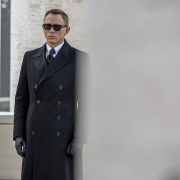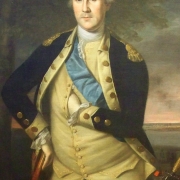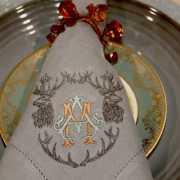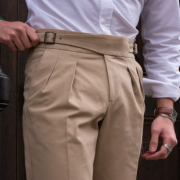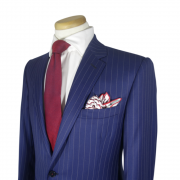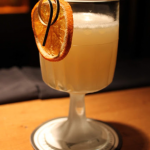The Iconic Trench Coat: The Classic Amongst Raincoats
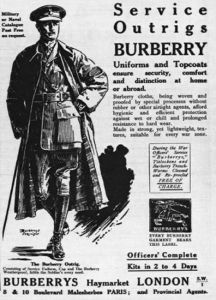
The most classic is of course the iconic Trench Coat. Of military origin, it is always waterproof, usually with buttons and a belt made of the same material. It is a very detailed garment: many pockets and buttons, flaps and, especially in the past, epaulettes.
Origin:
The word 'trench' indicates the military origin, and comes from the 'trenches' of World War I. In this global military conflict, British, French and American troops fought together against Germany.
In this global military conflict, British, French and American troops fought together against Germany. In the autumn of 1914, the battle came to a standstill in a protracted trench warfare. Fighters from both sides were stuck for days on end in muddy foxholes, which invariably flooded during the frequent heavy rainfall. The army uniforms of the time were usually not designed for such conditions. The thick British woolen overcoats, in particular, became soaked almost immediately, causing thousands of soldiers, including a good number of officers, to succumb to disease. With winter approaching, the British army command therefore urgently sought an alternative winter coat, which they eventually found in the trench coat.
Who is the inventor?
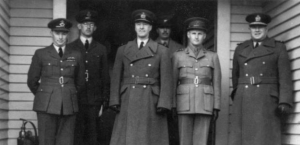
In any case, it was an instant success! The waterproof gabardine fabric offered perfect protection from the rain, as did the loose flap at the back. On top of that, the jacket came up to the knees, which made it long enough to keep the upper legs warm, but too short to drag through the mud. Officers could stow their gear in the large spacious pockets and sweat smell could escape through the vents.

Those same years were also the heyday of the great expeditions. One of the first to try gabardine was the British explorer Ernest Shackleton. Ernest Shackletonwho, in 1914, secretly crashed his ship into the crushing ice in Antarctica but managed to survive thanks to Burberry's indestructible fabric. And, of course, incredible perseverance.
So what is a trench coat really?
The trench coat is obviously a mackintosh made of gabardine, but leather or poplin are also sometimes used. It usually has a removable insulating lining and the classic models range in length from calf height to just above the knee.
Traditionally, it has a double row of ten buttons, wide lapels and a belt around the waist and sleeve ends. There are often flaps on the shoulders that can be closed with buttons. The classic colour for a trench coat is khaki.
During the First World War, the well known typical shoulder flaps and straps were added to the design of the trench coat. The shoulder flaps were used to attach epaulettes and other rank insignia; the belts, according to legend, were used to attach hand grenades. This sounds very tough and masculine, but in reality, swords and maps were simply attached to them.
Evolution
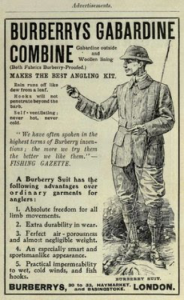
Several famous actors wore this jacket in classic films, such as Humphrey Bogart in 'Casablanca' and Marlene Dietrich in 'A Foreign Affair'. The fact that gangsters, detectives and femmes fatales appeared on the big screen in trench coats made the garment even more attractive to the general public. The trench coat's reputation was definitively established.
Other fictional heroes also contributed: Inspector Columbo, Dick Tracy, Neo from The Matrix and Peter Sellers' Inspector Jacques Clouseau. Michael Caine in Get Carter, Warren Beatty in Dick Tracy and Alain Delon in Le Samouraï. They usually wear a Fedora or, in extremely cold weather, an Ushanka.
What is Gabardine anyway, you may ask?
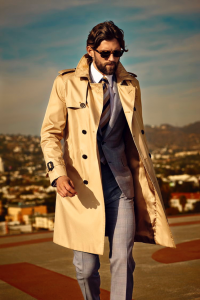
On the right side of the fabric, gabardine has more warp threads than weft threads. There are often twice as many warp threads as weft threads. The warp thread usually passes through two weft threads before passing under one or two weft threads. This compact weave makes gabardine water-repellent and crease-resistant. Like any twill weave, gabardine has characteristic diagonal lines. These are clearly visible, close together and slightly raised. The angle of the diagonals is 45 or 63 degrees. Men's fashion more often uses variants with the larger angle. Women's fashion predominantly uses the smaller angle.
Raphaël van den Poel, former fashion consultant of Scapa, Reinhard Frans and Atelier NA tailored suits,
writes our weekly blog on gentleman matters. He writes for MYX Magazine, a Flemish luxury lifestyle platform.
He also has his own blog which you can read here: http://belgiandandy.blogspot.com

Raphaël van den Poel The Belgian Dandy

